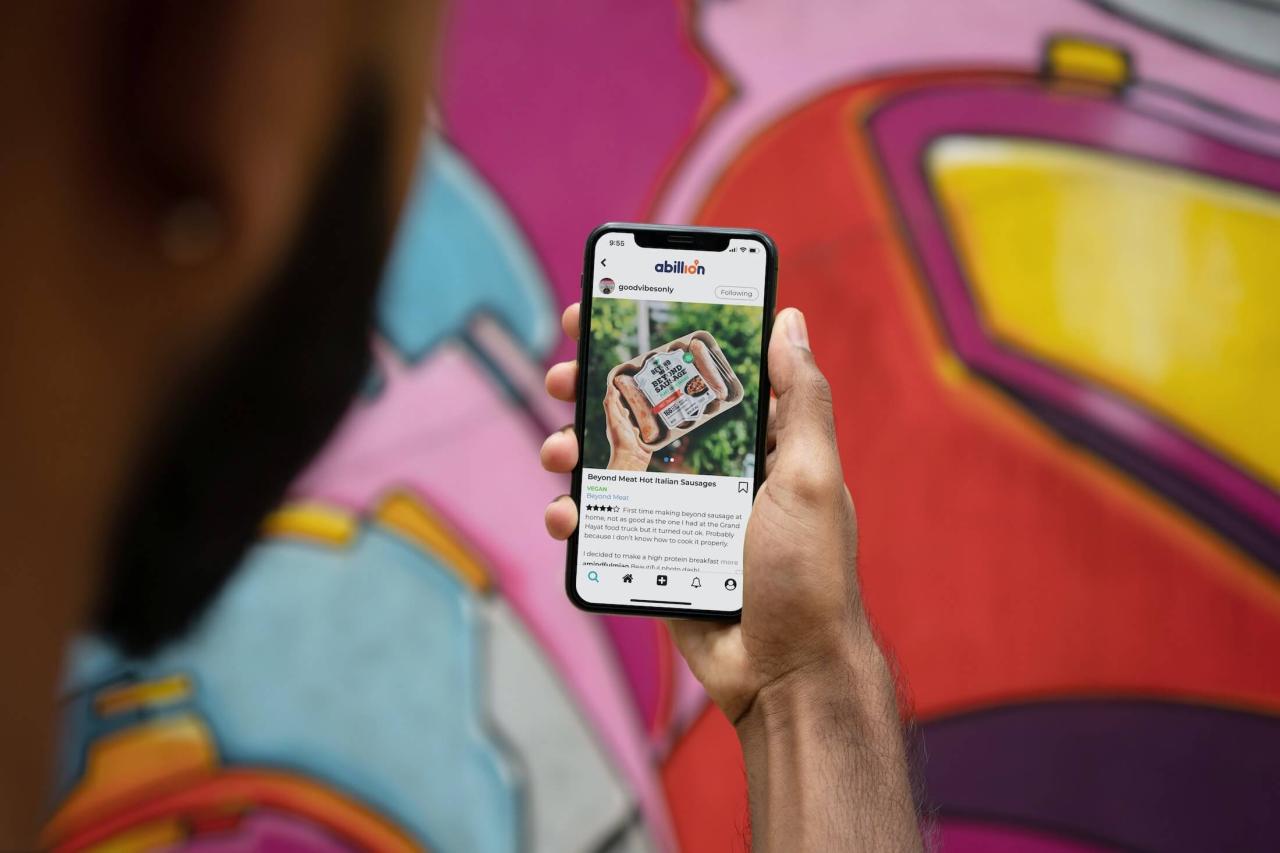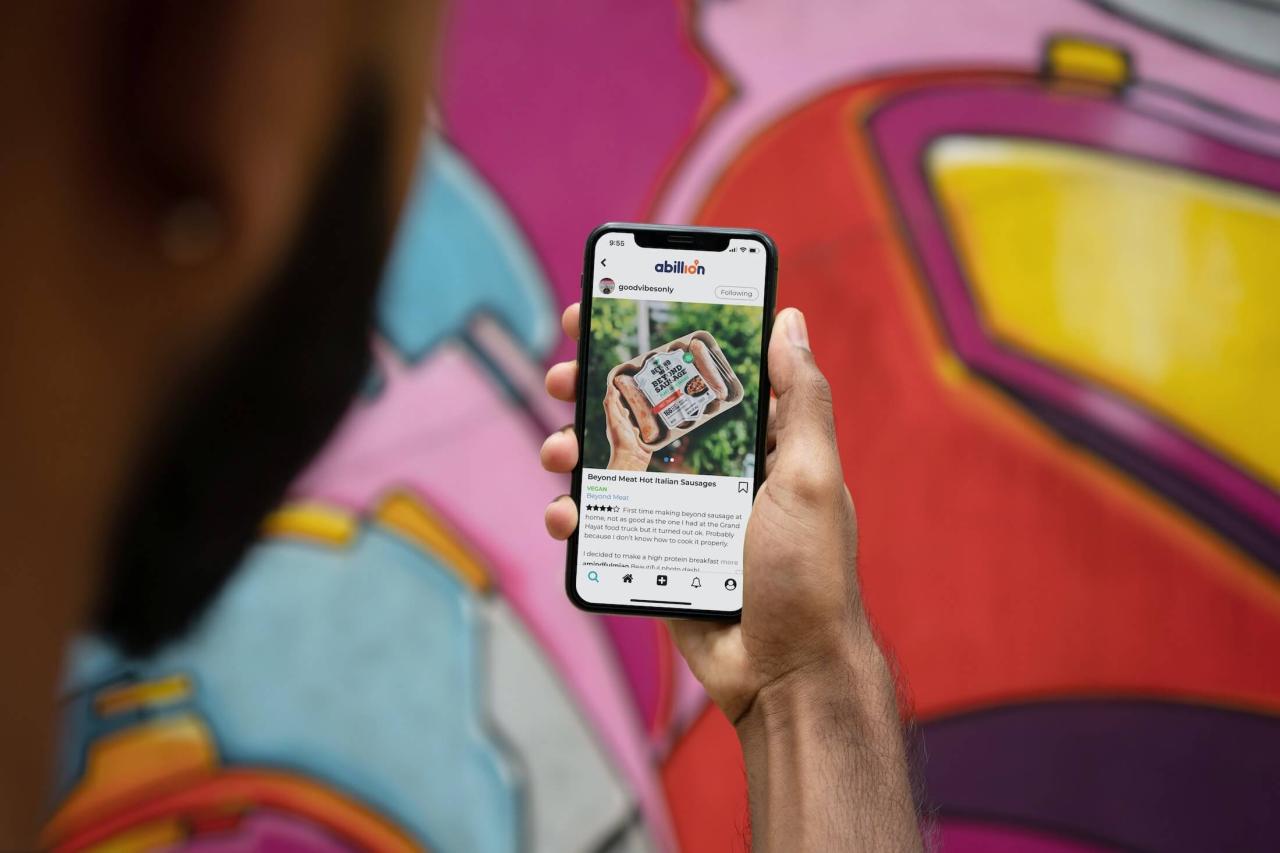Social Proof Web Design Boosting Conversions
Social proof web design is the art of using user feedback and social signals to build trust and encourage conversions. From testimonials and reviews to social media shares, these elements create a sense of credibility and social validation, influencing user decisions. Understanding how to effectively implement social proof across various website types, from e-commerce stores to service-based businesses and blogs, is key to driving conversions and building a stronger online presence.
This guide delves into the nuances of social proof, examining its impact on user perception and exploring best practices for design and implementation. We’ll cover everything from understanding the concept of social proof to leveraging it for conversions and considering design trends, including mobile-first and accessibility. Case studies will illuminate how real websites successfully utilize social proof to achieve impressive results.
Understanding Social Proof in Web Design
Social proof is a powerful psychological phenomenon where people look to the actions and opinions of others to inform their own decisions. In web design, this translates to using evidence of others’ positive experiences to build trust and encourage conversions. Websites leverage social proof to showcase their credibility, reliability, and popularity. This approach is crucial for fostering confidence in potential customers, ultimately boosting sales and engagement.Social proof works by tapping into our inherent desire to conform and avoid making mistakes.
By showcasing positive feedback from past users, businesses can subtly influence visitors to trust the product or service being offered. This can take many forms, from customer testimonials to ratings and social media shares.
Types of Social Proof and Their Impact
Various forms of social proof can influence user perception. Testimonials, often featuring quotes or stories from satisfied customers, directly convey positive experiences. Reviews, whether on product pages or service profiles, offer a broader perspective of user satisfaction, often with quantifiable ratings. Social media shares, likes, and comments demonstrate the product’s popularity and social acceptance.
Effective Implementation Across Website Types
The application of social proof varies based on the website type. For e-commerce sites, showcasing product ratings and reviews is paramount. Clear displays of star ratings, customer testimonials, and recent purchase information build confidence in the product. Service-based businesses can utilize testimonials to highlight the expertise and reliability of their services. Case studies and client logos can be particularly effective in showcasing the breadth of their experience.
Blogs can leverage comments, social media shares, and reader engagement metrics to demonstrate the value and relevance of their content.
Comparison of Social Proof Elements
While all social proof elements aim to build trust, their effectiveness varies. Testimonials often resonate deeply with individual users, connecting on a personal level. Reviews offer a broader, more data-driven perspective, often influencing decisions based on aggregate feedback. Social media shares, while visually appealing, may not always convey the same level of individual trust as a testimonial. The optimal approach often involves combining multiple social proof elements to create a holistic picture of positive user experiences.
Social proof in web design is all about showing users that others are using and trusting a product or service. A great example of this powerful concept is the recent news of college student Jaren Barajas beating Damian Lillard in a 3-point shooting contest and winning $100,000 here. This kind of impressive feat, highlighted widely, creates a powerful social proof that could inspire trust and encourage others to try the product or service the college student used.
This concept of showcasing success stories directly translates into compelling web design for building trust and driving conversions.
Table of Pros and Cons of Social Proof Techniques
| Social Proof Technique | Pros | Cons | Examples |
|---|---|---|---|
| Testimonials | Builds trust and rapport, connects with users on a personal level, often emotionally impactful. | Can be biased if not carefully selected or moderated, may not represent the full range of experiences. | “I was so impressed with the customer service, they went above and beyond to help me.” |
| Reviews | Provides a quantitative measure of satisfaction, demonstrates widespread approval, easy to understand and compare. | Potential for negative reviews to outweigh positive ones, may not capture the nuanced experience of each user, requires a sufficient volume of reviews to be truly impactful. | “Excellent service and a great product. 5 out of 5 stars.” |
| Social Media Shares | Demonstrates popularity and social validation, visually appealing, easily shareable. | Shares can be inflated or manipulated, doesn’t necessarily translate to actual product satisfaction, may not always reflect a genuine user experience. | “Shared this product on Facebook, it’s amazing!” |
Implementing Social Proof Elements

Social proof, the psychological phenomenon where people conform to the actions of others, is a powerful tool for e-commerce. Effectively implementing social proof elements on your website can significantly boost conversions by building trust and demonstrating popularity. By showcasing positive user experiences, you signal to potential customers that your product or service is valuable and trustworthy.This section dives into the practical application of social proof.
We’ll explore how to design compelling user interfaces, integrate social proof into website navigation, understand the importance of trust signals, and present social proof data in an accessible and engaging way. This will ensure that the elements effectively influence user behavior and drive sales.
Designing a Product Page with Social Proof
A well-designed product page integrates social proof elements seamlessly. Visual cues, such as star ratings and customer reviews, should be prominently displayed above the fold, immediately grabbing attention and conveying a sense of positive feedback. Include testimonials from satisfied customers, highlighting specific benefits they experienced. Consider incorporating a carousel feature to showcase multiple reviews and testimonials in a visually appealing format.
A clear call to action, alongside the social proof elements, can further encourage conversions.
Integrating Social Proof into Website Navigation and Layout, Social proof web design
Strategic placement of social proof elements throughout the website enhances their impact. In the navigation bar, consider incorporating a “customer reviews” or “testimonials” section, which links directly to a dedicated page displaying positive feedback. This provides easy access to social proof for visitors navigating the site. In the footer, you could include a summary of frequently asked questions and customer responses, addressing common concerns and providing reassurance.
Importance of Trust Signals and their Connection to Social Proof
Trust signals, such as security badges, privacy policies, and customer support information, are crucial for building trust. These elements work in tandem with social proof, creating a comprehensive environment of trust and reliability. For example, a prominently displayed SSL certificate reinforces the security of online transactions, which in turn influences customer confidence.
Social proof in web design is all about showing users that others are using and liking a product or service. It builds trust and encourages conversions. This mirrors the current political climate, where, as the article opinion trump fanned inflation fears now they haunt his presidency discusses, past actions and opinions can have lasting effects.
Ultimately, understanding how to effectively leverage social proof is key to creating a trustworthy and engaging online experience for your users.
Best Practices for Displaying Social Proof Data
Presenting social proof data in a visually appealing and easily digestible manner is key. Use clear and concise language in reviews and testimonials, avoiding overly technical jargon. Employ visual cues like icons or star ratings to make the data more engaging. Use a variety of visual representations to avoid monotony. For example, use different color schemes for different categories of testimonials.
Consider incorporating animations or interactive elements to enhance engagement.
Placement Options for Social Proof Elements
| Placement | Description | Pros | Cons |
|---|---|---|---|
| Above the fold | Displayed prominently on the page, immediately visible upon loading. | High visibility, immediate impact on user perception. | Can be overwhelming if not designed effectively, might feel intrusive if not well-integrated. |
| Below the fold | Located below the initial content, requiring scrolling to view. | Doesn’t distract from the core content, more space for detailed information. | Requires user effort to view, might be missed by some visitors. |
| Product Page | Displayed directly on the product page alongside the product details. | Provides relevant context for the product, directly addresses user concerns about the product. | Can be cluttered if not organized effectively. |
| Footer | Located at the bottom of the webpage. | Provides a sense of completeness and reassurance, subtly enhances trust. | Might not be noticed by all users, less prominent than above-the-fold placements. |
Leveraging Social Proof for Conversions
Social proof is a powerful tool in the digital world, especially for e-commerce and service-based websites. It leverages the inherent human tendency to follow the actions of others. By showcasing positive feedback from past customers, businesses can build trust and encourage conversions. Understanding how social proof influences purchasing decisions is crucial for optimizing website performance and achieving business goals.Effectively implemented social proof can significantly boost conversion rates, reduce cart abandonment, and foster a sense of community among website visitors.
This, in turn, leads to a more positive user experience and stronger brand perception. The impact is demonstrably evident across various online platforms, from large retailers to smaller service providers.
Influence on Purchasing Decisions on E-commerce Websites
Social proof plays a vital role in shaping purchasing decisions on e-commerce websites. Customers often look for reassurance before committing to a purchase, especially when dealing with an unfamiliar brand or product. Positive reviews, testimonials, and ratings from previous customers provide this much-needed assurance. A visible star rating system, coupled with a collection of customer reviews, creates a sense of community and reliability, encouraging potential buyers to trust the product and make a purchase.
For instance, a website featuring numerous positive reviews and high ratings for a specific product will likely result in higher conversion rates compared to one with limited or negative feedback.
Social proof in web design is all about showing users that others are happy with a product or service. It builds trust and credibility. Take a look at the recent news about Tesla battery storage systems in LA, where issues with some battery systems are reportedly slowing down the return process for affected customers burning teslas fried battery storage systems slow la return.
Ultimately, understanding social proof principles can help businesses build more trust and positive user experiences online.
Impact on Conversion Rate of Service-Based Websites
Service-based websites benefit from social proof in a similar way, but the emphasis shifts to showcasing expertise and reliability. Case studies, client testimonials, and portfolio displays serve as social proof, demonstrating the provider’s competence and experience. Visual examples of previous successful projects, along with positive client feedback, establish credibility and trust with potential clients. The higher the perceived expertise and success rate, the more likely a client is to choose that service provider.
This is especially important in industries where trust is paramount, such as legal services or financial advice.
Relationship Between Social Proof and User Trust
Social proof directly impacts user trust. Positive feedback from other users signals reliability and legitimacy. This, in turn, reduces perceived risk associated with making a purchase or engaging with a service. When users see that others have had positive experiences, they are more likely to trust the brand or provider and make a purchase decision. For example, a service provider with a strong reputation built on positive client testimonials will have a higher conversion rate and a greater sense of trust among potential customers.
Maintaining Authenticity of Social Proof Elements
Authenticity is crucial in social proof. Fabricated or misleading testimonials can damage a brand’s reputation and erode trust. Genuine, unbiased feedback is paramount. Users can readily detect insincerity, so transparent and honest representations of social proof are essential for long-term success. Incorporating real, verified user experiences fosters trust and positive word-of-mouth marketing.
False or staged reviews can result in a severe drop in conversions and a loss of credibility.
Measuring Effectiveness of Social Proof Implementations
Measuring the effectiveness of social proof elements is crucial for optimizing website performance. Tracking key metrics such as conversion rates, bounce rates, and time spent on pages can provide valuable insights. Analyzing these metrics before and after implementing social proof elements allows for a clear assessment of its impact. For example, comparing the conversion rates of pages with and without social proof elements reveals the effectiveness of the strategy.
A/B testing different social proof elements can also identify which ones are most impactful and generate the best results.
Social Proof and Website Design Trends
Social proof, the psychological phenomenon where people conform to the actions of others, is a powerful tool in web design. Understanding how users perceive and react to social signals is crucial for building trust and encouraging conversions. Modern website design incorporates social proof strategically, adapting to evolving user behaviors and technological advancements.Recent trends reflect a move toward subtle, integrated displays of social proof, rather than blatant attempts to manipulate users.
This shift prioritizes user experience and avoids feeling intrusive or forced. Emphasis is placed on authenticity and transparency, ensuring social proof elements align with the overall brand narrative and resonate with target audiences.
Mobile-First Design Impact on Social Proof
Mobile devices have become the primary way many users interact with websites. This mobile-first design philosophy necessitates adjustments to social proof strategies. Social proof elements must be optimized for smaller screens, ensuring clear visibility and intuitive interaction. The design needs to prioritize quick loading times and effortless navigation to maintain user engagement.
Social Proof Integration in Responsive Web Design
Responsive web design adapts layouts and content to various screen sizes. Implementing social proof effectively in this context requires flexibility. For example, testimonials displayed prominently on a desktop screen might be presented in a more compact, carousel format on a mobile device. Visual elements like star ratings should be easily visible and clickable across all screen sizes.
Effectiveness of Social Proof Across Devices
The effectiveness of social proof can vary across devices. While star ratings and user reviews are highly influential on desktop, they may be less impactful on mobile. This is because mobile users often have shorter attention spans and are more focused on quick information. Therefore, strategically placing concise and visually compelling social proof elements is key on mobile, such as highlighting the average rating prominently and incorporating easily readable reviews.
Impact of Accessibility on Social Proof
Websites should be accessible to users with disabilities. Implementing social proof in an accessible manner is vital. This includes using clear and concise language, providing alternative text for images, and ensuring that all elements are navigable using keyboard-only input. For example, a screen reader should be able to accurately describe the social proof elements to visually impaired users.
Color contrast and font sizes should also be optimized for better readability. Using standardized and well-documented accessibility best practices will ensure that social proof elements are easily understandable for users with various needs.
Case Studies of Effective Social Proof

Social proof, the psychological phenomenon where people look to the actions of others to determine their own behavior, is a powerful tool in web design. Understanding how to effectively incorporate social proof can significantly boost conversions and build trust with potential customers. By demonstrating that others have already benefited from a product or service, you increase the perceived value and reliability.
This section delves into specific examples of successful social proof implementation on various websites.Effective social proof on a website isn’t just about displaying numbers; it’s about strategically integrating these signals into the overall design and user experience. This includes considering the specific context of the website and its target audience, and carefully selecting the types of social proof elements that resonate most strongly with them.
The successful use of social proof is a subtle art, blending seamlessly with the website’s aesthetic and enhancing the user journey.
Examples of Successful Social Proof Implementations
Several websites leverage social proof to create a compelling user experience. A prime example is the online retailer, Amazon. They prominently feature customer reviews and ratings, testimonials, and frequently bought together suggestions. This comprehensive approach fosters trust and guides users towards informed purchasing decisions.
Amazon’s Social Proof Strategy
Amazon’s use of social proof is multifaceted and strategically placed. Product pages are replete with customer reviews, ratings, and star-based feedback. The sheer volume of reviews creates an immediate sense of community and social validation. The visual representation of ratings (stars) and the ability to sort by rating directly impacts user decision-making. Additionally, recommendations for complementary items, based on past purchases, are prominently displayed.
This highlights the social aspect of buying and reinforces the idea that others find value in these related products.
Airbnb’s Approach to Building Trust
Airbnb’s success hinges on building trust among users. They emphasize user reviews, ratings, and photos. Detailed descriptions of accommodations, coupled with diverse reviews, create a realistic perception of the experience. This transparency, supported by social proof, is crucial for convincing users of the quality and authenticity of the listings. Photos, too, are an integral part of building trust, showing potential guests the reality of the space they are considering renting.
Spotify’s Utilization of Social Proof
Spotify showcases the popularity of playlists and artists through metrics like “popular” or “trending.” These elements highlight the social nature of music discovery, making it easier for new users to find music they enjoy. The platform also features user-generated content like shared playlists, encouraging engagement and demonstrating the diverse and interesting content available. The algorithm and the community features on Spotify work together to build a sense of shared interest and discovery.
Design Considerations and Aesthetics
The effective integration of social proof into website design is not merely about placing elements; it’s about how they interact with the overall aesthetic. For instance, visually prominent reviews on product pages or testimonials on landing pages can reinforce the trustworthiness of the brand. The design should be clean, uncluttered, and focus on the user experience, with the social proof elements seamlessly blending into the page layout.
Conclusive Thoughts: Social Proof Web Design
In conclusion, implementing social proof elements effectively is crucial for any website aiming to boost conversions and foster trust. By understanding the various techniques, their pros and cons, and how to implement them strategically, you can create a more compelling and persuasive user experience. Remember to prioritize authenticity and maintain a balance between social proof and your brand’s unique voice.
This comprehensive approach will ultimately lead to improved user engagement and a higher return on investment.






